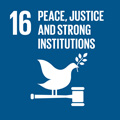- Docente: Helen Dawson
- Credits: 6
- SSD: L-OR/03
- Language: English
- Teaching Mode: Traditional lectures
- Campus: Bologna
- Corso: Second cycle degree programme (LM) in Archaeology and Cultures of the Ancient World (cod. 8855)
-
from Sep 18, 2024 to Oct 25, 2024
Learning outcomes
By the end of the course students will be aware of the issues, players and politics of the cultural heritage from a global historical perspective. Focusing on different case studies from the Mediterranean to the Near Eastern regions, students will learn how the cultural heritage has been manipulated and the strategies to prevent, protect and communicate it. The role of western intervention will be critically evaluated and compared to the local community perspective. Students will acquire a solid understanding of the international regulations on cultural heritage as well as the emerging role of the media in reshaping the way this is perceived and communicated. They will acquire some basic skills with the digital tools used in documenting and analysing endangered monuments and archaeological sites. They will also learn about the professional environment, internships and the job opportunities in this field. The methodological and practical skills they learn will enable students to form a critical assessment of the scientific and more popular approaches to the cultural heritage. They will also be able to carry out independent scientific research as well as to collaborate in professional activities preserving and publicizing this field. The different regions and diverse cultures considered will also allow students to relate to and work with heterogeneous cultural groups.
Course contents
What is “endangered” heritage, who or what puts it at risk and why? What are the short-term and long-term causes and effects, the human and/or natural factors involved? Who is responsible for its safekeeping and how should we rethink the role of institutions and museums? This course will introduce key concepts, mitigation strategies, and possible solutions to current challenges to different kinds of heritage. We will explore both local and global perspectives on endangered heritage and decolonization with specific reference to case studies in the Mediterranean and Near East. As a result, students will develop a more critical understanding of intersectional perspectives based on multiple, interlocking scales of analysis.
Topics will include:
- What is endangered cultural heritage?
- Who "owns" the past?
- Local and global perspectives on heritage
- Difficult Heritage
- Heritage protection: Theory and practice
- Conflicting politics and religion
- Climate change and natural disasters
- Looting and the illicit antiquities market
- Good and bad practices in heritage management
- Heritage futures
The course will also comprise practical sessions using Google Earth and QGIS for which no prior knowledge is required.
Readings/Bibliography
Introductory reading:
González Zarandona, J. A., Cunliffe, E. and Saldin, M. 2023. A path well worn? Approaches for the old problem of heritage destruction. In "The Routledge Handbook of Heritage Destruction", edited by J.A. González Zarandona, E. Cunliffe, M. Saldin. Chapter 1. London: Routledge.
Renfrew, C. and Bahn, P. 2020. Archaeology. Theories, Methods and Approaches. London, Thames and Hudson. Read Chapter 15, The Future of the Past. How to Manage the Heritage? pages 564-583.
Shepherd, N. (ed.) 2023. Rethinking Heritage in Precarious Times Coloniality, Climate Change, and Covid-19. London: Routledge.
Teaching methods
The typical class will comprise a one-hour lecture followed by discussion seminars on assigned reading and case studies, structured debates, and student presentations on previously agreed topics. There will be two practical sessions on Google Earth and QGIS to assess damage to archaeological sites.
Assessment methods
Assessment for attending students (at least two thirds of classes) will comprise a portfolio of five critical slides (25% of the grade), an oral presentation (25% of the grade), and a 2000 word essay (50% of the grade). Further details are provided in the syllabus.
Assessment for non-attending students comprises:
- Short critical and visual summaries of five papers of their choice selected from the required seminar reading, to be submitted as five PPT slides saved as a single PDF (25% of the grade)
- A 1500 word report on damage assessment at the site of Mari (Syria), using the template provided (see Session 5 in Virtuale for instructions on how to do this) (25% of the grade)
- A 3000 word essay (excluding bibliography) with this title: What is endangered cultural heritage? Global and local perspectives at <site of your choice> (50% of the grade)
The bibliography for the essay should include at least five items from the syllabus reading list, which students must refer to in the text. Non-attending students should email me to agree the date of submission of the course work, which is to be submitted in one go, specifying the site of their choice before they start writing the essay.
The grading criteria for this course are available on Virtuale: https://virtuale.unibo.it/pluginfile.php/2208800/mod_resource/content/1/Assessment%20criteria.pdf
Teaching tools
Teaching tools, including the syllabus and other course material, will be posted for download on the Virtuale platform by the start of the course.
Students who require specific services and adaptations to teaching activities due to a disability or specific learning disorders (SLD), must first contact the appropriate office: https://site.unibo.it/studenti-con-disabilita-e-dsa/en/for-students.
Office hours
See the website of Helen Dawson
SDGs




This teaching activity contributes to the achievement of the Sustainable Development Goals of the UN 2030 Agenda.
